Class 12 CBSE Biology Specimen 2023
Maximum Marks: 70
Time Allowed: Three hours
All questions are compulsory.
The question paper has five sections and 33 questions. All questions are compulsory.
Section–A has 16 questions of 1 mark each; Section–B has 5 questions of 2 marks each;
Section– C has 7 questions of 3 marks each; Section– D has 2 case-based questions of 4
marks each; and Section–E has 3 questions of 5 marks each.
There is no overall choice. However, internal choices have been provided in some
questions. A student has to attempt only one of the alternatives in such questions.
Wherever necessary, neat and properly labeled diagrams should be drawn
Section-A
Question 1
An infertile couple was advised to undergo In vitro fertilization by the doctor.
Out of
the options given below, select the correct stage for transfer to the fallopian tube for
successful results?
(a) Zygote only
(b) Zygote or early embryo upto 8 blastomeres
(c) Embryos with more than 8 blastomeres
(d) Blastocyst Stage
Solution

Question 2
Given below are four contraceptive methods and their modes of action. Select the
correct match:

(a) a)–(i) b)–(ii) c)– (iii) d)–(iv)
(b) a)–(ii) b)–(iii) c)–(iii) d) – (i)
(c) a)–(iii) b)–(iv) c)–(ii) d)–(i)
(d) a)–(iv) b)–(i) c)– (iii) d)–(ii)
Solution

Question 3
Which of the following amino acid residues will constitute the histone core?
(a) Lysine and Arginine
(b) Asparagine and Arginine
(c) Glutamine and Lysine
(d) Asparagine and Glutamine
Solution

Question 4
Evolutionary convergence is development of a
(a) common set of functions in groups of different ancestry.
(b) dissimilar set of functions in closely related groups.
(c) common set of structures in closely related groups.
(d) dissimilar set of functions in unrelated groups.
Solution

Question 5
Apis mellifera are killer bees possessing toxic bee venom. Identify the treatment
and
the type of immunity developed from the given table to treat a person against the
venom of this bee.
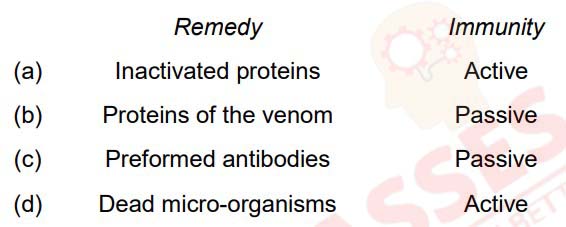
Solution

Question 6
Interferons are most effective in making non-infected cells resistant against the
spread of which of the following diseases in humans?
(a) ascariasis
(b) ringworm
(c) amoebiasis
(d) AIDS
Solution

Question 7
Which of the following water samples in the table given below, will have a higher
concentration of organic matter?

Solution

Question 8
The figure below shows the structure of a plasmid.
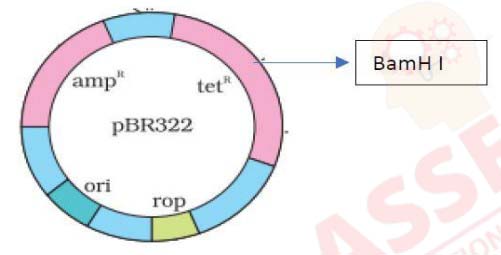
A foreign DNA was ligated at BamH1. The transformants were then grown in a
medium containing antibiotics tetracycline and ampicillin.
Choose the correct observation for the growth of bacterial colonies from the given
table

Solution

Question 9
Swathi was growing a bacterial colony in a culture flask under ideal laboratory
conditions where the resources are replenished. Which of the following equations will
represent the growth in this case?
(Where population size is N, birth rate is b, death rate is d, unit time period is t, and
carrying capacity is K).
(a) dN/dt = KN
(b) dN/dt = r N
(c) dN/dt = r N(K-N/K)
(d) dN/dt = r N(K+N/K)
Solution

Question 10
Sea Anemone gets attached to the surface of the hermit crab. The kind of population
interaction exhibited in this case is
(a) amensalism.
(b) commensalism.
(c) mutualism.
(d) parasitism.
Solution

Question 11
Which of the following food chains is the major conduit for energy flow in
terrestrial
and aquatic ecosystems respectively?

Solution

Question 12
Which of the following is an example of ex situ conservation?
(a) Sacred Groves
(b) National Park
(c) Biosphere Reserve
(d) Seed Bank
Solution

Question 13
Assertion: Apomictic embryos are genetically identical to the parent plant.
Reason: Apomixis is the production of seeds without fertilization.
Solution

Question 14
Assertion: When white eyed, yellow bodied Drosophila females were hybridized with
red eyed, brown-bodied males; and F1 progeny was intercrossed, F2 ratio deviated
from 9 : 3 : 3 : 1.
Reason: When two genes in a dihybrid are on the same chromosome, the
proportion of parental gene combinations is much higher than the non-parental type.
Solution

Question 15
Assertion: Functional ADA cDNA genes must be inserted in the lymphocytes at the
early embryonic stage.
Reason: Cells in the embryonic stage are mortal, differentiated and easy to
manipulate
Solution

Question 16
Given below is the Age Pyramid of population in one of the states in India as per
2011 census. It depicts the male population on the left hand side, female population
on the right hand side, newborns towards the base and gradually increasing age
groups as we move from base to the top, with the oldest population at the top. Study this pyramid and
comment upon the appropriateness of the Assertion and
the Reason

Assertion: It is a stable population.
Reason: The pre-reproductive and reproductive individuals are almost in equal
numbers and the post-reproductive individuals are relatively fewer
Solution

SECTION-B
Question 17
In the figure given below, parts A and B show the level of hormones which influence
the menstrual cycle. Study the figure and answer the questions that follow:
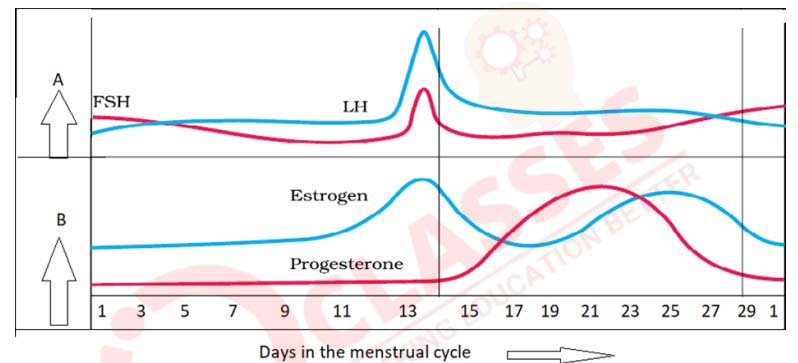
(a) Name the organs which secrete the hormones represented in parts A and B.
(b) State the impact of the hormones in part B on the uterus of the human female
during 6 to 15 days of menstrual cycle?
Solution

Question 18
A true breeding pea plant, homozygous dominant for inflated green podsis crossed with another pea plant with constricted yellow pods (ffgg). With the help of punnett square show the above cross and mention the results obtained phenotypically and genotypically in F1 generation?
Solution


Question 19
During a field trip, one of your friend in the group suddenly became unwell, she started sneezing and had trouble in breathing. Name and explain the term associated with such sudden responses. What would the doctor recommend for relief?
Solution

Question 20
CTTAAG
GAATTC
(a) What are such sequences called? Name the enzyme used that recognizes
such nucleotide sequences.
(b) What is their significance in biotechnology?
Solution


Question 21
(a) Given below is a pyramid of biomass in an ecosystem where each bar
represents the standing crop available in the trophic level. With the help of an
example explain the conditions where this kind of pyramid is possible in
nature?

(b) Will the pyramid of energy be also of the same shape in this situation? Give
reason for your response.
OR
(a) Draw a pyramid of numbers where a large number of insects are feeding on
the leaves of a tree. What is the shape of this pyramid?
(b) Will the pyramid of energy be also of the same shape in this situation? Give
reason for your response.
Solution




SECTION-C
Question 22
Explain the functions of the following structures in the human male reproductive
system.
(a) Scrotum
(b) Leydig cells
(c) Male accessory glands
Solution



Question 23
State the agent(s) which helps in pollinating in the following plants. Explain the
adaptations in these plants to ensure pollination:
(a) Corn
(b) Water hyacinth
(c) Vallisneria
Solution



Question 24
(a) Identify the polarity of x to x’ in the diagram below and mention how many more
amino acids are expected to be added to this polypeptide chain.

(b) Mention the codon and anticodon for alanine.
(c) Why are some untranslated sequences of bases seen in mRNA coding for a
polypeptide? Where exactly are they present on mRNA?
Solution

Question 25
(a) How is Hardy-Weinberg's expression “(p2
+ 2pq + q2
) = 1”derived?
(b) List any two factors that can disturb the genetic equilibrium.
Solution



Question 26
Highlight the structural importance of an antibody molecule with a diagram. Name
the four types of antibodies found to give a humoral immune response, mentioning
the functions of two of them you have studied.
OR
(a) Explain the Life cycle of Plasmodium starting from its entry in the body of female
Anopheles till the completion of its life cycle in humans.
(b) Explain the cause of periodic recurrence of chill and high fever during malarial
attack in humans.
Solution




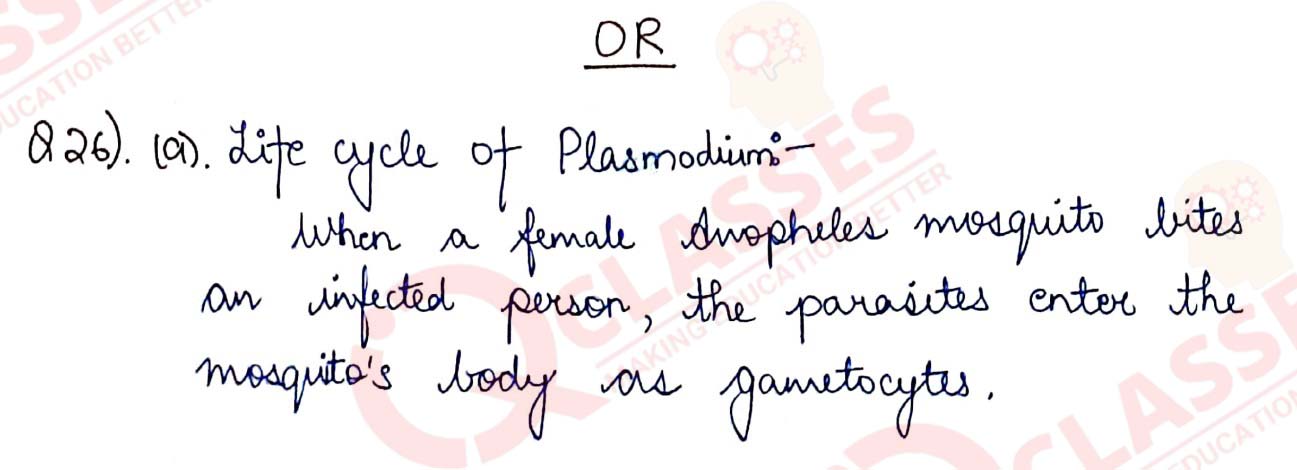
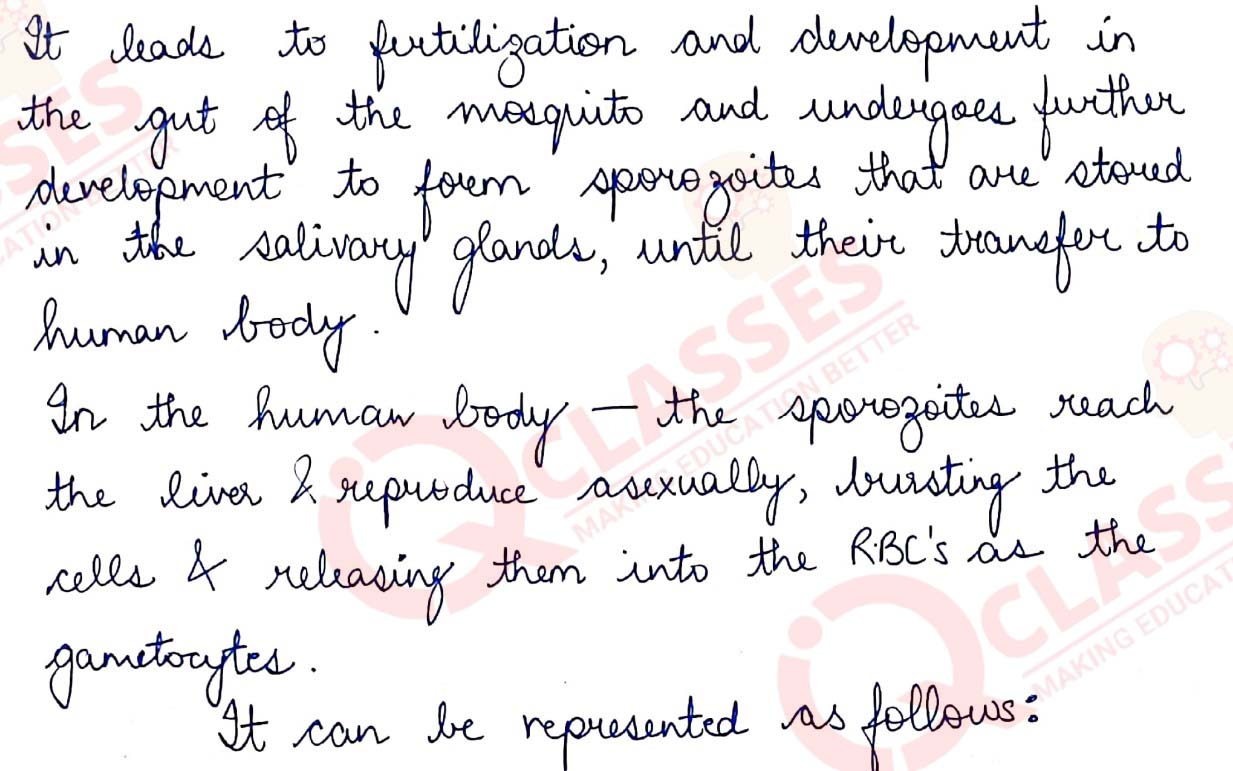
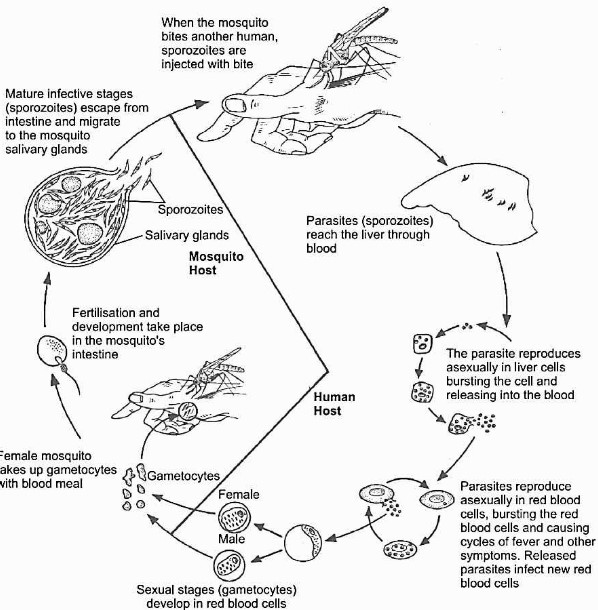

Question 27
Carefully observe the given picture. A mixture of DNA with fragments ranging from
200 base pairs to 2500 base pairs was electrophoresed on agarose gel with the
following arrangement.
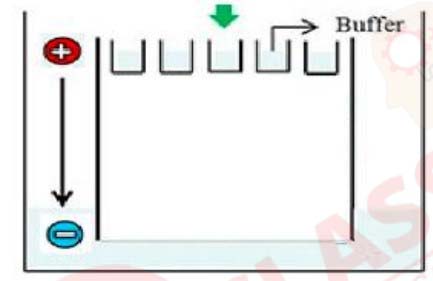
(a) What result will be obtained on staining with ethidium bromide? Explain with
reason.
(b) The above set-up was modified and a band with 250 base pairs was obtained at
X.
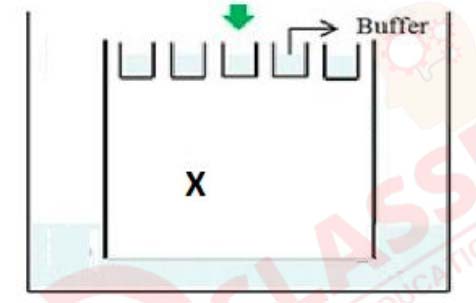
What change(s) were made to the previous design to obtain a band at X? Why did
the band appear at the position X?
Solution


Question 28
(a) There was loss of biodiversity in an ecosystem due to a new construction
project in that area. What would be its impact on the ecosystem? State any
three.
(b) List any three major causes of loss of biodiversity?
Solution


SECTION-D
Question 29
Study the Pedigree chart given below and answer the questions that follow:

(a) On the basis of the inheritance pattern exhibited in this pedigree chart, what
conclusion can you draw about the pattern of inheritance?
(b) If the female is homozygous for the affected trait in this pedigree chart, then
what percentage of her sons will be affected ?
(c) Give the genotype of offsprings 1,2,3 and 4 in III generation
OR
(c) In this type of inheritance pattern, out of male and female children which one
has less probability of receiving the trait from the parents. Give a reason.
Solution


Question 30
The data below shows the concentration of nicotine smoked by a smoker taking 10
puffs/ minute.
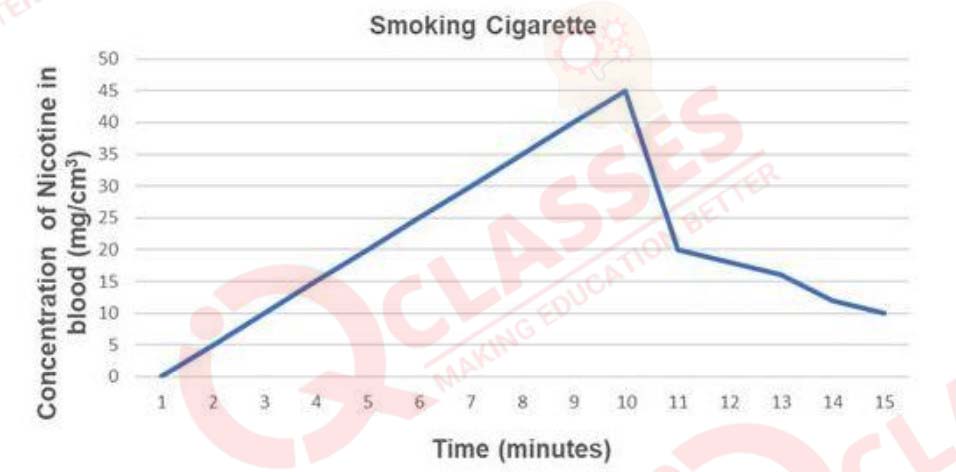
(a) With reference to the above graph explain the concentration of nicotine in blood
at 10 minutes.
(b) How will this affect the concentration of carbon monoxide and haembound
oxygen at 10 minutes?
(c) How does cigarette smoking result in high blood pressure and increase in heart
rate?
OR
(c) How does cigarette smoking result in lung cancer and emphysema?
Solution


SECTION-E
Question 31
Trace the events from copulation to zygote formation in a human female.
OR
Trace the development of a megaspore mother cell to the formation of mature
embryo sac in a flowering plant.
Solution





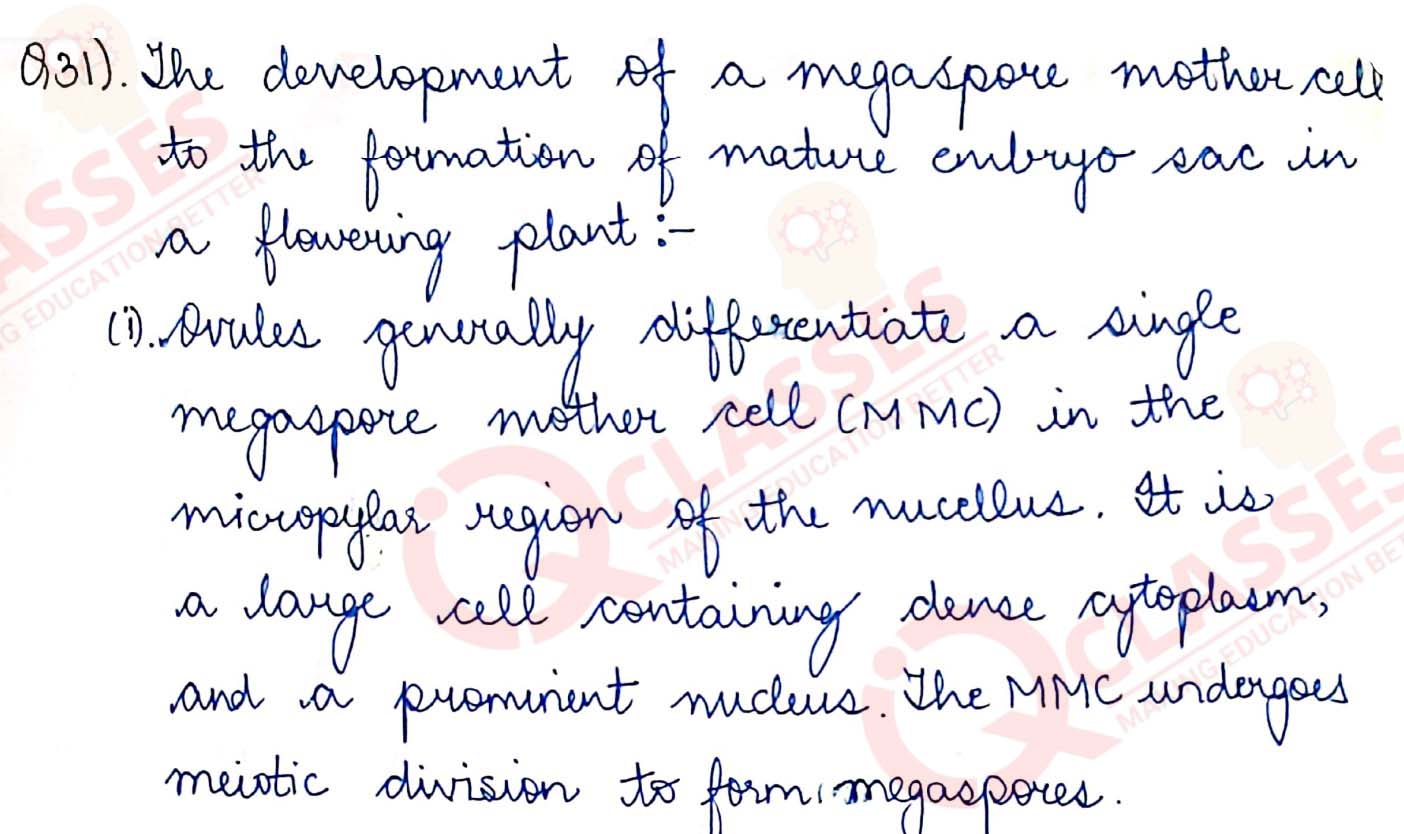
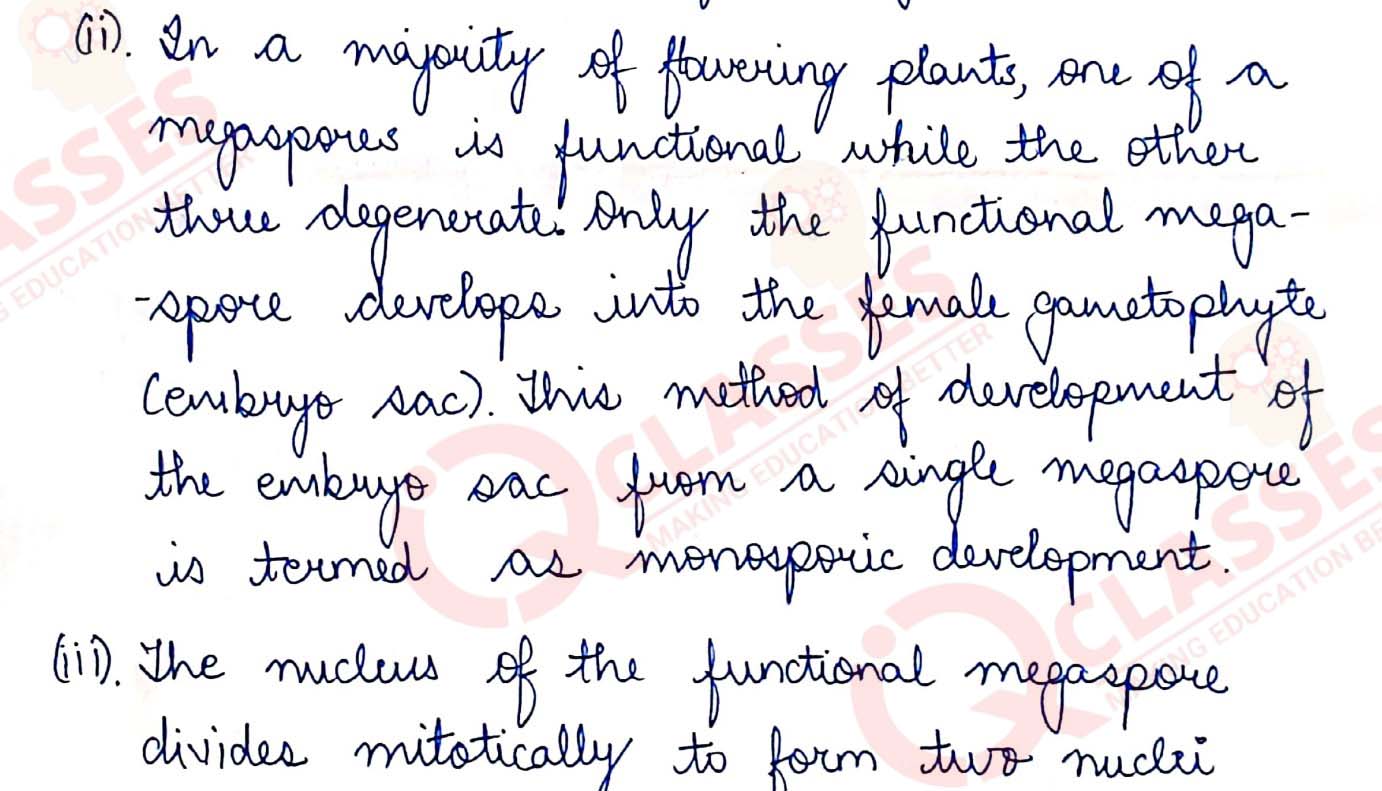


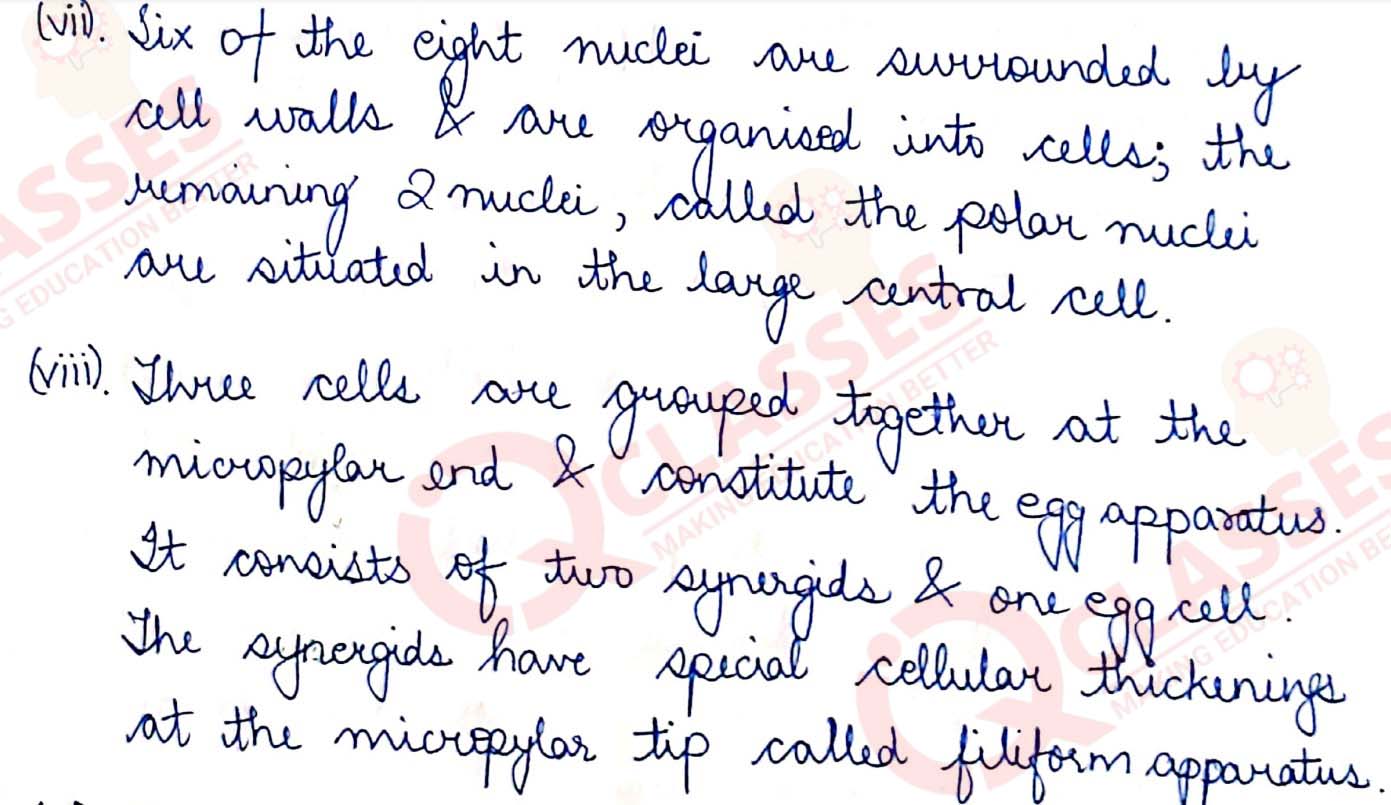

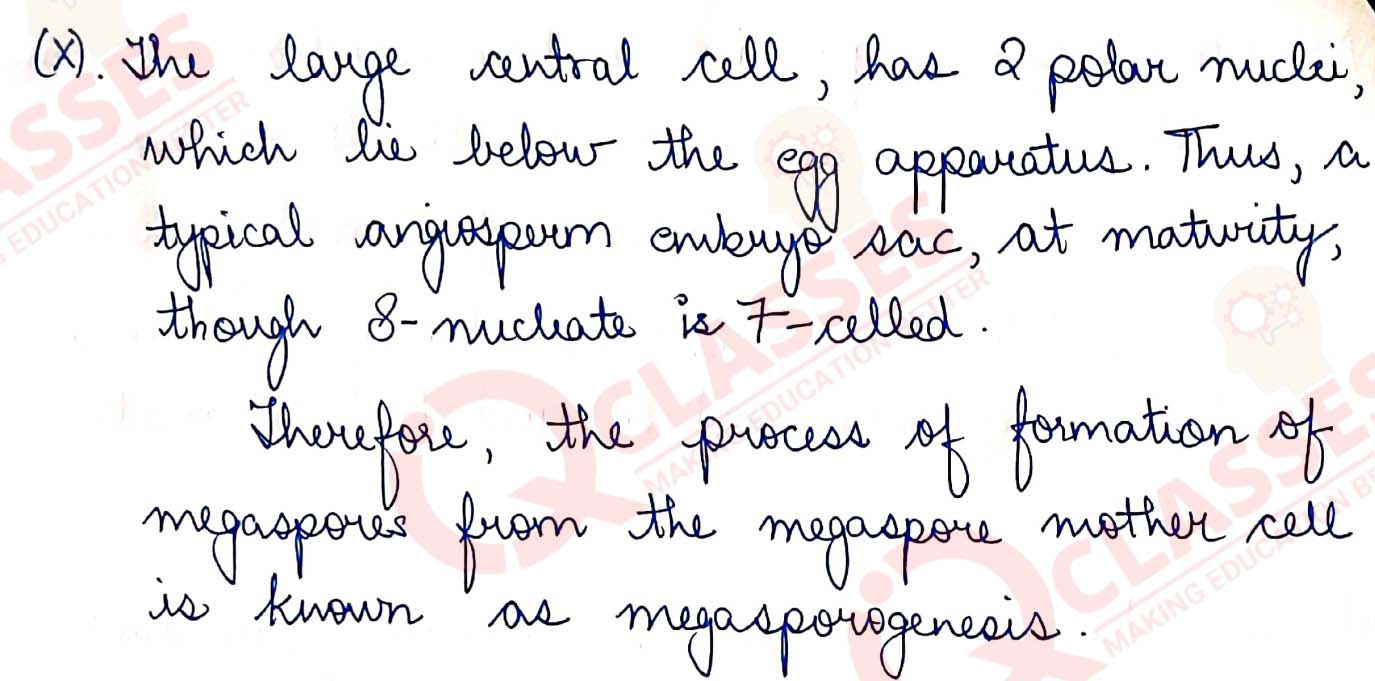
Question 32
Observe the segment of mRNA given below.

(a) Explain and illustrate the steps involved to make fully processed hnRNA?
(b) Gene encoding RNA Polymerase I and III have been affected by mutation in a cell. Explain its impact on the synthesis of polypeptide, stating reasons.
OR
Study the schematic representation of the genes involved in the lac operon given
below and answer the questions that follow:

(a) The active site of enzyme permease present in the cell membrane of a
bacterium has been blocked by an inhibitor, how will it affect the lac operon?
(b) The protein produced by the i gene has become abnormal due to unknown
reasons. Explain its impact on lactose metabolism stating the reason.
(c) If the nutrient medium for the bacteria contains only galactose; will operon be
expressed? Justify your answer.
Solution






Question 33
Oil spill is a major environmental issue. It has been found that different strains
of
Pseudomonas bacteria have genes to break down the four major groups of
hydrocarbons in oil. Trials are underway to use different biotechnological tools to
incorporate these genes and create a genetically engineered strain of Pseudomonas
- a ‘super-bug’, to break down the four major groups of hydrocarbons in oil. Such
bacteria might be sprayed onto surfaces polluted with oil to clean thin films of oil.
(a) List two advantages of using bacteria for such biotechnological studies?
(b) For amplification of the gene of interest PCR was carried out. The PCR was run
with the help of polymerase which was functional only at a very low
temperature. How will this impact the efficiency of the PCR? Justify.
(c) If such bacteria are sprayed on water bodies with oil spills, how will this have a
positive or negative effect on the environment? Discuss.
OR
Insects in the Lepidopteran group lay eggs on maize crops. The larvae on hatching
feed on maize leaf and tender cob. In order to arrest the spread of three such
Lepidopteran pests, Bt maize crops were introduced in an experimental field.
A study was carried out to see which of the three species of lepidopteran pests was
most susceptible to Bt genes and its product.
The lepidopteran pests were allowed to feed on the same Bt-maize crops grown on
5 fields (A-E).
The graph below shows the leaf area damaged by these three pests after feeding on
maize leaves for five days.
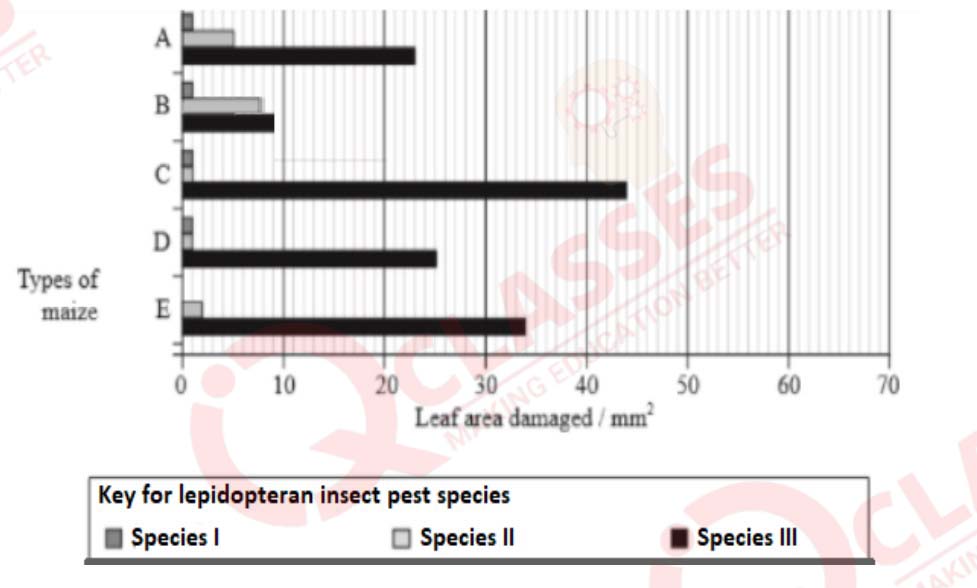
Insect gut pH was recorded as 10, 8 and 6 respectively for Species I, II and III
respectively.
(a) Evaluate the efficacy of the Bt crop on the feeding habits of the three species of
stem borer and suggest which species is least susceptible to Bt toxin.
(b) Which species is most susceptible to Bt-maize, explain why?
(c) Using the given information, suggest why similar effect was not seen in the
three insect species?
Solution



